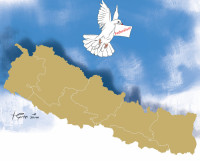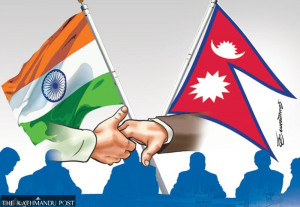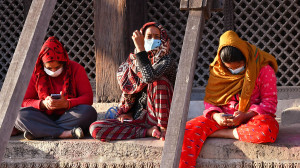Columns
Shifts in international cooperation
Foreign aid decline will threaten Nepal’s SDG goals and graduation from the LDC status.
Bishow Parajuli
International cooperation is a lifeline for millions of people worldwide and a key source of support for developing countries. Over the years, there has been a significant increase in overseas development assistance (ODA).
In 2024, member countries of the Organisation for Economic Cooperation and Development (OECD) contributed over $212 billion in ODA, with a fall of 7.1 percent. The United States continued to be the largest Development Assistance Committee (DAC) provider of ODA at around $63.3 billion, accounting for 30 percent of total DAC ODA in 2024, followed by Germany ($32.4 billion), the United Kingdom ($18 billion), Japan ($16.8 billion) and France ($15.4 billion). Golf Economic Cooperation Council (GECC) members, emerging economies such as India, South Africa, Brazil and China have also become significant sources of aid, but only four countries have reached the UN-set target of a minimum of 0.7 percent of the GDP towards overseas development aid.
International Financial Institutions (IFIs) such as the World Bank, International Monetary Fund (IMF), regional banks, United Nations system, Asian Infrastructure and Investment Bank (AIIB) and New Development Bank (NDB)-also known as the BRIC Bank are also major sources for the ODA. Additionally, there are other windows for development support, such as climate funds, peace and security funds and health-related funds.
Shifts in emphasis
Development assistance focuses on a wide range of areas, from good governance to fiscal policy adjustment, market liberalisation, sustainable development goals, life-saving humanitarian responses and/or key national interests of donor countries. ODA funding is also increasingly spent on meeting domestic needs in donor countries, with a substantial rise among some donors: From 9 percent of ODA in Sweden, Norway and Switzerland to 43 percent in the UK supporting refugees in donor countries.
Further, bilateral aid has substantially risen, which means that development aid continues to be influenced by donors’ interests. NGOs have also been essential partners in development support, spending $50 billion in aid in 2023, with specific sectoral priorities.
The latest changes in US policy have resulted in a drastic decline in foreign assistance, potentially close to 80 percent. Most of USAID’s activities and MCC programmes worldwide have been suspended. Many other traditional donors, such as the UK, Germany and others, have also announced cuts in aid. This indicates a changing shift in the foreign aid landscape, immediately impacting development and humanitarian funding for developing countries.
The latest US policy shifts and a large decline in its support also significantly impact the UN system, with major cuts in programmes and some agencies announcing up to 50 percent cuts in staffing.
Nepal and the ODA
Nepal has long benefited from overseas development assistance for its development programmes. In 2010-11, foreign aid to Nepal was about $1.1 billion, increased to $2 billion in 2019-20 and rose to $2.4 billion in 2023-24. The latest amount constituted some 20 percent of Nepal’s development budget. It is reported that a significant portion (65-70 percent) are loans, with 20 percent as grants and 10 percent to 15 percent in technical assistance. Increased loans mean increased fiscal burden due to high debt servicing costs.
Nepal’s largest donor is the US, followed by China, India, Japan, the UK, Germany, the EU and other OECD members, as well as the IFIs and the UN system. Funding support from IFIs is also influenced by their board members, who are mostly OECD donor countries.
Since 2019, the US government has provided over $700 million in aid focusing on health, economic growth, democracy, governance and food security and an additional $500 million in August 2023 for infrastructure development in the energy and transportation sectors, with significant contributions to Nepal’s growth and prosperity. The impact of the US aid cuts has severe impacts for Nepal, with a slowdown in sectoral development in several areas, unless alternative methods of financing development activities are found.
With more resources being demanded, the decline in foreign aid is likely to threaten Nepal’s ambition to achieve the Sustainable Development Goals and graduate from LDCs.
Way forward
In the face of challenges ahead, there should be efforts to showcase the delivery of sustainable development goals and overall improvement in people’s lives in Nepal that demonstrate the value of development support. Rising corruption and slow aid delivery threaten donors’ willingness to continue and increase support. So, it is essential to maximise efforts to seek foreign aid in grants and ensure that all loans are invested in productive sectors.
Similarly, Nepal should prudently prioritise its development programme with increased domestic funding and minimal dependence on foreign assistance. Increased remittances have resulted in a surge of liquidity in banks, but these resources are mainly used for consumption, rather than productive investments. The Nepali government has the opportunity to help direct these funds to finance productive sectors with attractive incentives and returns.
For a win-win solution, the government can encourage new measures such as the “debt swap” to finance specific projects where donors will agree to forgo debt in lieu of the government using more donor resources to finance specific priority projects in agriculture, health and education sectors. Likewise, the authorities must place a moratorium and restrictions on unnecessary expenses such as study tours, purchasing expensive vehicles, unproductive infrastructures and fringe benefits for politicians and the bureaucracy.




 13.12°C Kathmandu
13.12°C Kathmandu
.jpg&w=200&height=120)












%20(1).jpg&w=300&height=200)

